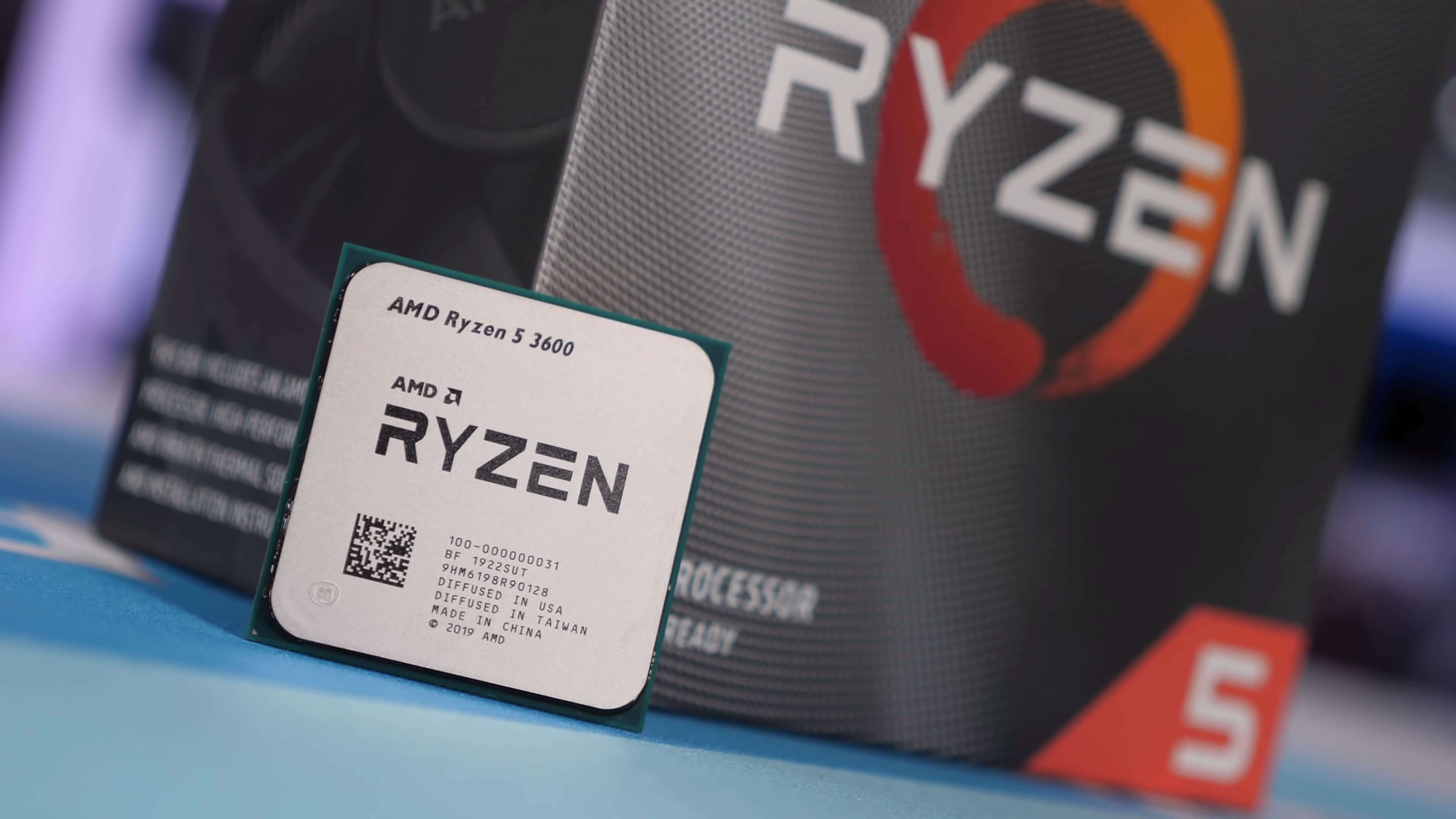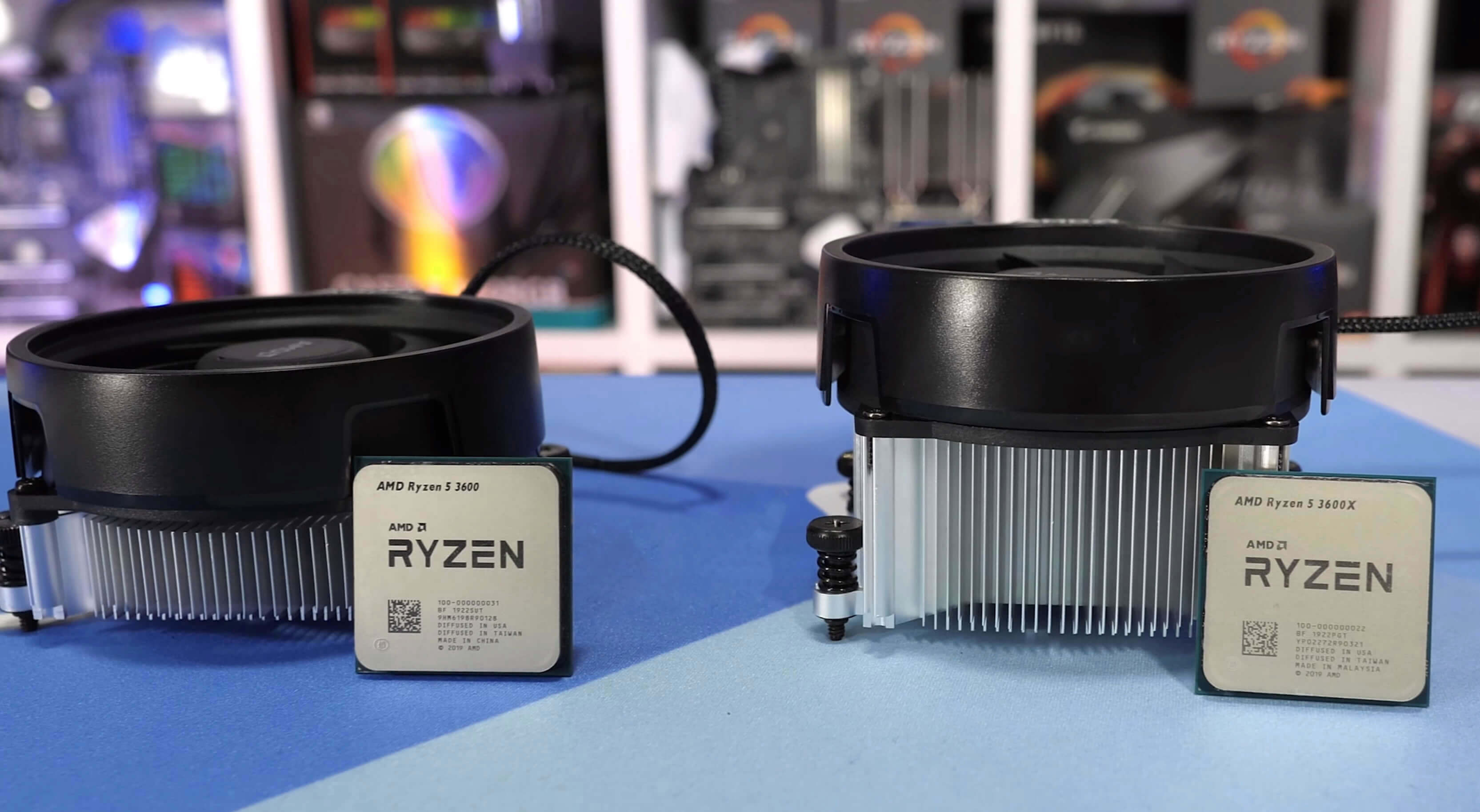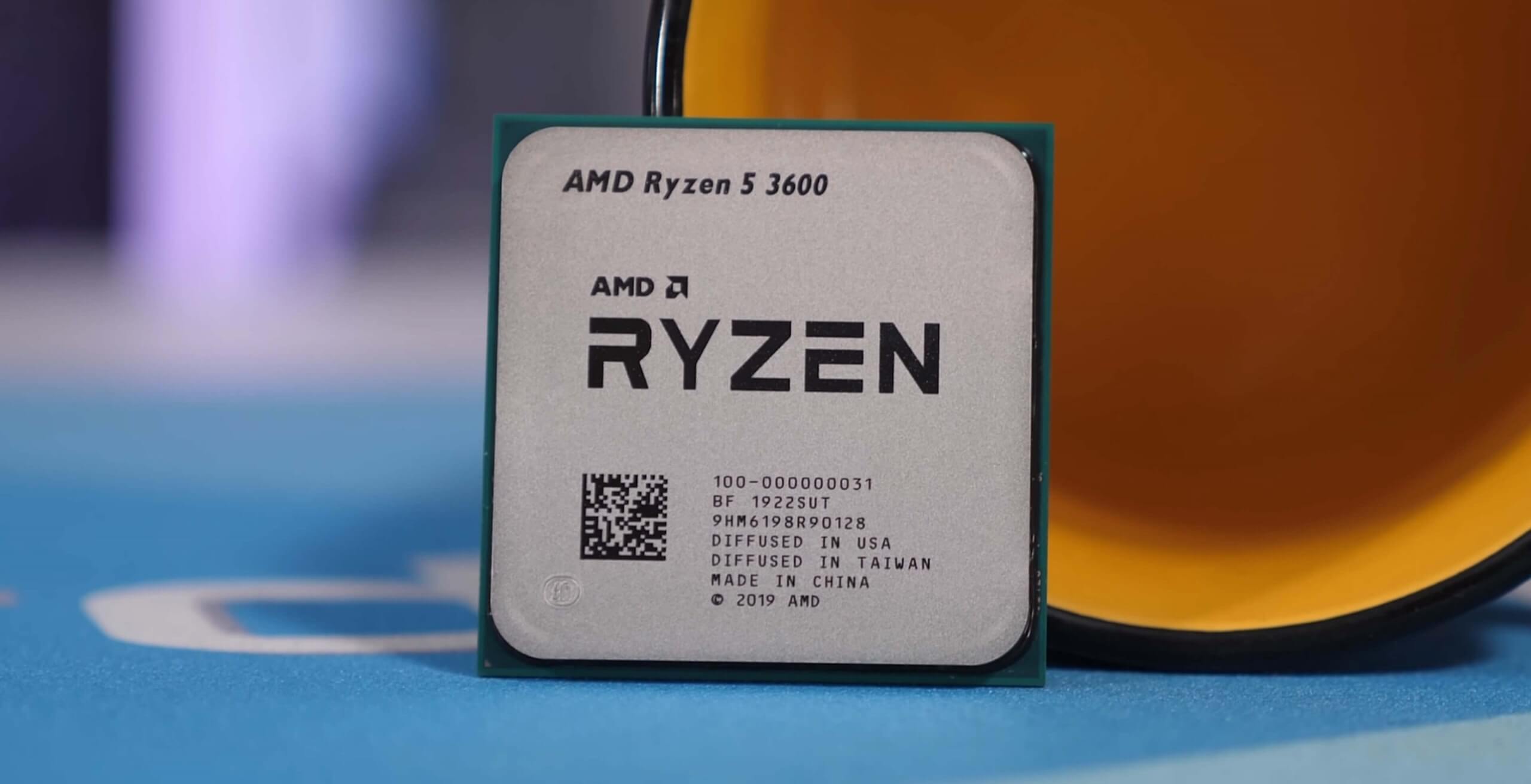We were among the first publications to review the Ryzen 5 3600 and at $200 we found the 6-core, 12-thread processor a crankin' good deal. In short, it murders the 9600K in core-heavy productivity benchmarks and is right there for gaming, offering better 1% low performance often, all while costing notably less.
But without question the most popular question we received afterwards was: should you buy the Ryzen 5 3600 or the 3600X?
Not for nothing this series of AMD processors have been our picks for the best all-round value since release and they're also among the best selling CPUs on Amazon. We're not into guessing games at TechSpot, so we've run some hard benchmarks to decide.
Before going into in-depth testing though, here's a quick run down in regards to how these two CPUs compare on paper. The Ryzen 5 3600 comes clocked at 3.6 GHz for the base and 4.2 GHz for the boost, the 3600X runs 200 MHz faster at 3.8 GHz and 4.4 GHz, so a 6% base clock increase and a 5% boost clock increase. The only other change in specification is the TDP, the R5 3600 is a 65 watt part and the 3600X a 95 watt part. As such the 3600 gets the 65w Wraith Stealth and the 3600X the 95w Wraith Spire.
The base model R5 3600 currently comes in at $175, while the 3600X costs 14% more at $200. The original $50 markup has been lowered since AMD released the CPUs in mid 2019.
TL;DR
Having tested both R5 3600 models (see all of that further down below), here's the tale of the tape:
- The Ryzen 5 3600 is the better choice at $175 for most people trying to save some money.
- At stock, we found the 3600X to offer a very mild performance increase (5% or less) compared to the vanilla 3600. This small difference does not justify an extra $40+, but with the current different at just $25, you can really go either way.
- Both CPUs tend to overclock to similar levels, and the boost offers negligible performance advantages.
- As shown in our full review, the Ryzen 5 3600 offers tremendous value and will work on even the most basic B350/B450 motherboards.
- The 3600X gets you a better cooler out of the box, this is somewhat justifiable for the extra ~$25 on the 3600X. However we'd generally recommend to simply buy the 3600 and if you want to reduce the operating volume and squeeze a tiny bit more performance, grab something like the Cooler Master 212 for $30 that will be more effective anyway.
- Misleading TDP ratings: The only thing that makes the R5 3600 a 65 watt TDP part, is the 65 watt cooler, while the 3600X is a 95 watt TDP part because it comes with a 95 watt cooler. The CPUs themselves are otherwise identical.
| Ryzen 7 3700X | Ryzen 5 3600X | Ryzen 5 3600 | Ryzen 5 2600 | |
| Price | $300 | $200 | $175 | $120 |
| Cores / Threads | 8 / 16 | 6 / 12 | 6 / 12 | 6 / 12 |
| Base Frequency | 3.6 GHz | 3.8 GHz | 3.6 GHz | 3.4 GHz |
| Boost Frequency | 4.4 GHz | 4.4 GHz | 4.2 GHz | 3.9 GHz |
| L2 Cache | 4MB | 3MB | 3MB | 3MB |
| L3 Cache | 32MB | 32MB | 32MB | 16MB |
| Memory Config | Dual-Channel | |||
| Max Mem Support | DDR4-3200 | DDR4-2933 | ||
| TDP | 65 W | 95 W | 65 W | 65 W |
| Box cooler | Wraith Prism RGB | Wraith Spire | Wraith Stealth | Wraith Stealth |
Both CPUs were tested on the Gigabyte X570 Aorus Xtreme with 16GB of G.Skill's FlareX DDR4-3200 CL14 memory and a GeForce RTX 2080 Ti on the graphics side.
Also read: AMD Ryzen 7 3800X vs. 3700X: What's the Difference?
Benchmarks
The Cinebench R20 multi-core shows a very mild 2% increase in performance for the 3600X over the vanilla 3600. Very underwhelming difference – but could this be a good thing? – that doesn't justify the 25% price increase.
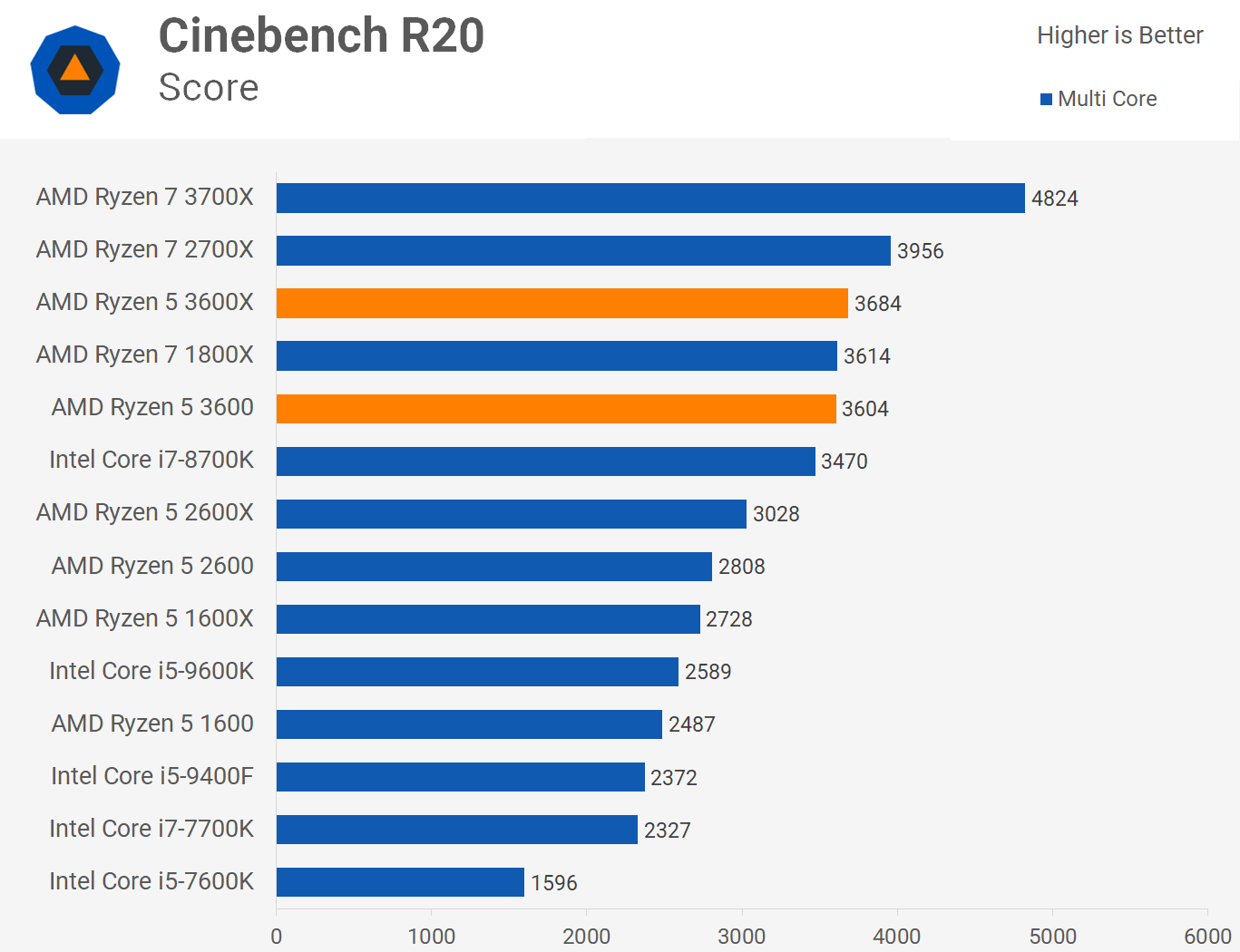
Meanwhile the single core performance sees an increase of just 3%, going from 481 pts to 497 pts.
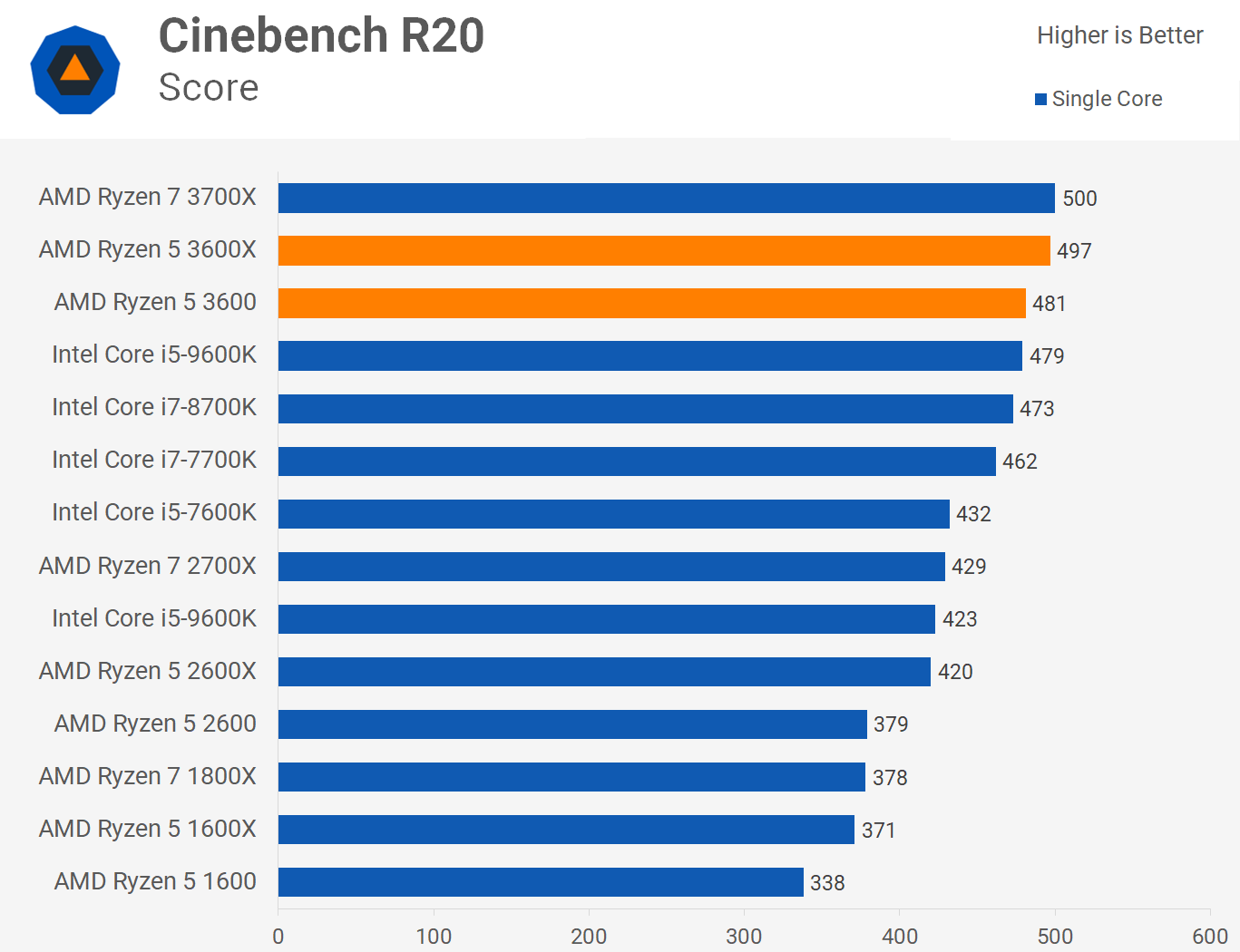
Moving on to Adobe Premiere we see the biggest performance gain yet as the 3600X reduced the render time by 5%, taking 513 seconds opposed to 539 seconds. Not a big deal though.
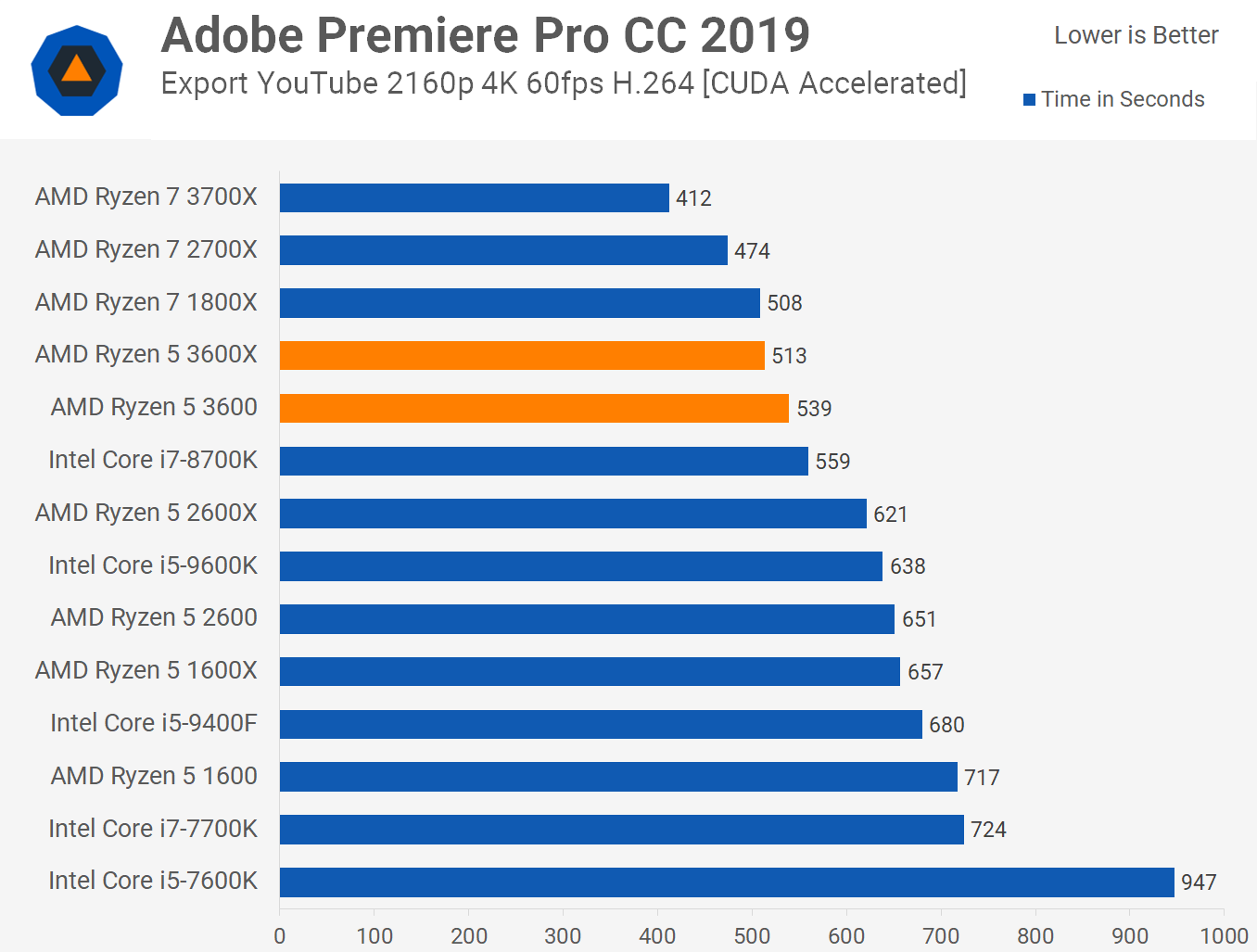
This time the 3600X reduced the render time by just 4% when testing with Blender, at this point you're probably starting to question why we need two 6-core/12-thread Zen 2-based CPUs.
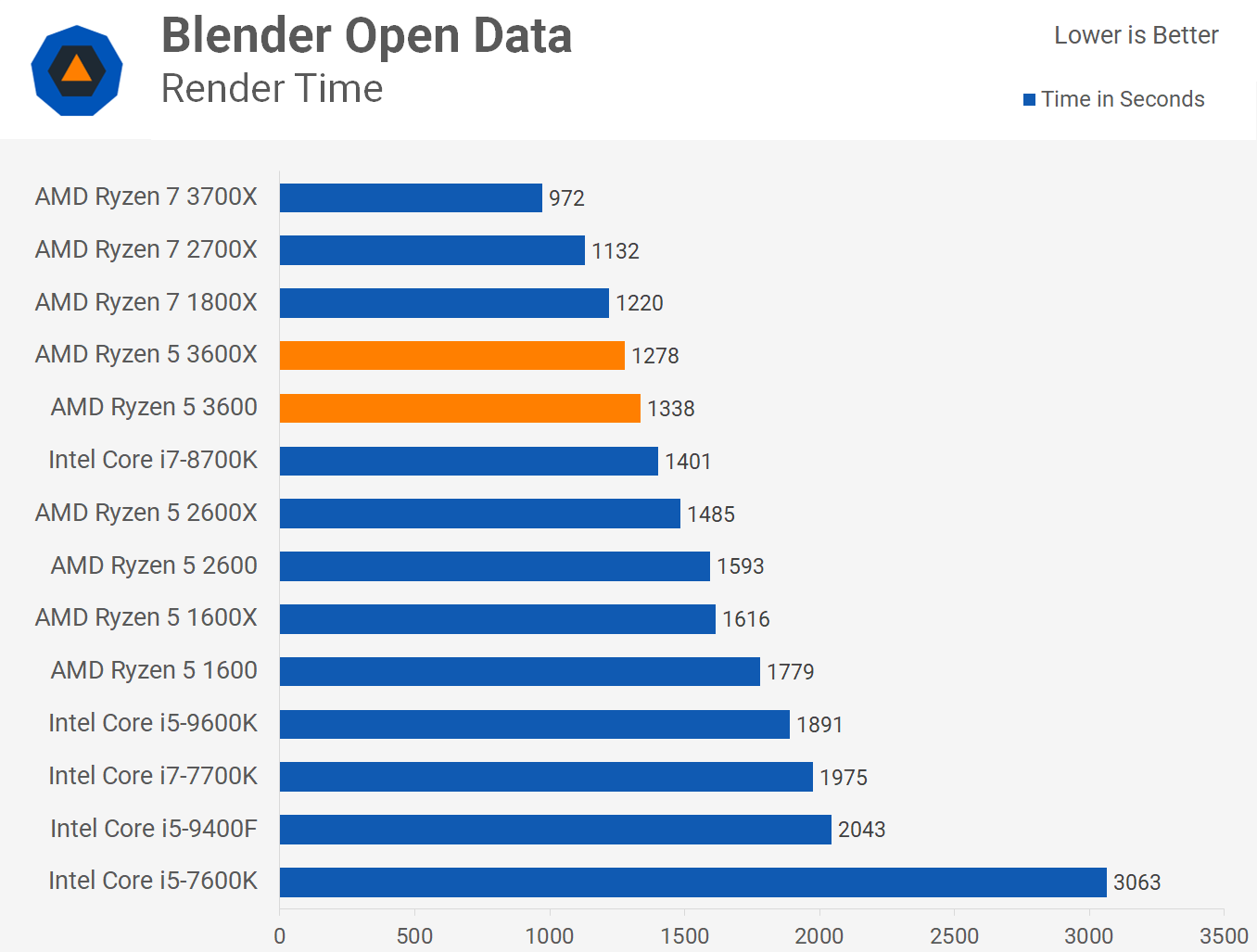
Gaming Benchmarks
Moving on to games and... not much to say here either. The 3600 and 3600X basically delivered identical performance in Assassin's Creed Odyssey, the 3600X was ~2% faster which equates to a 2 fps difference at most.
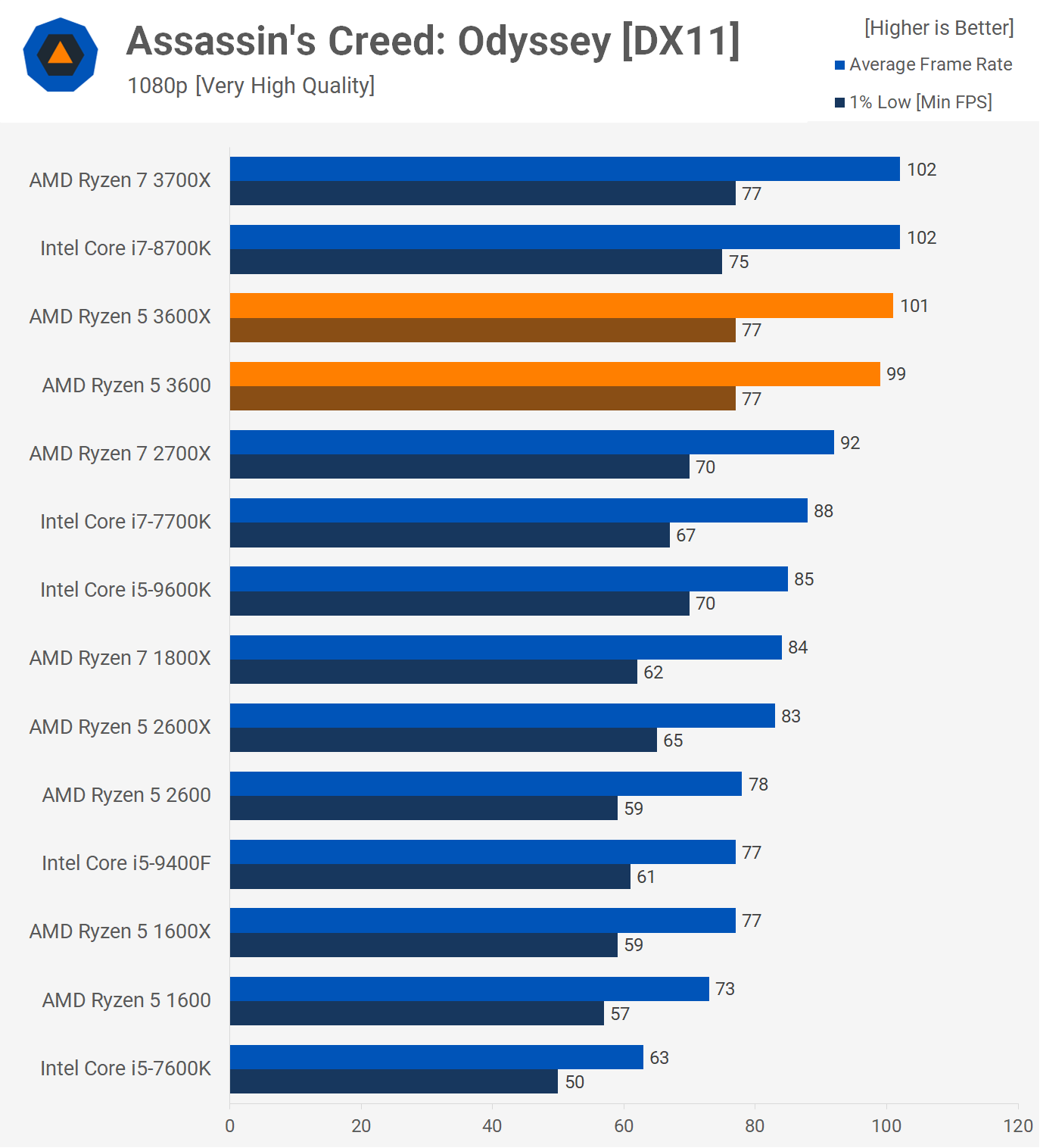
We see the same in Battlefield V, the 3600X was only up to 2 fps faster than the non-X model, so about the same performance.
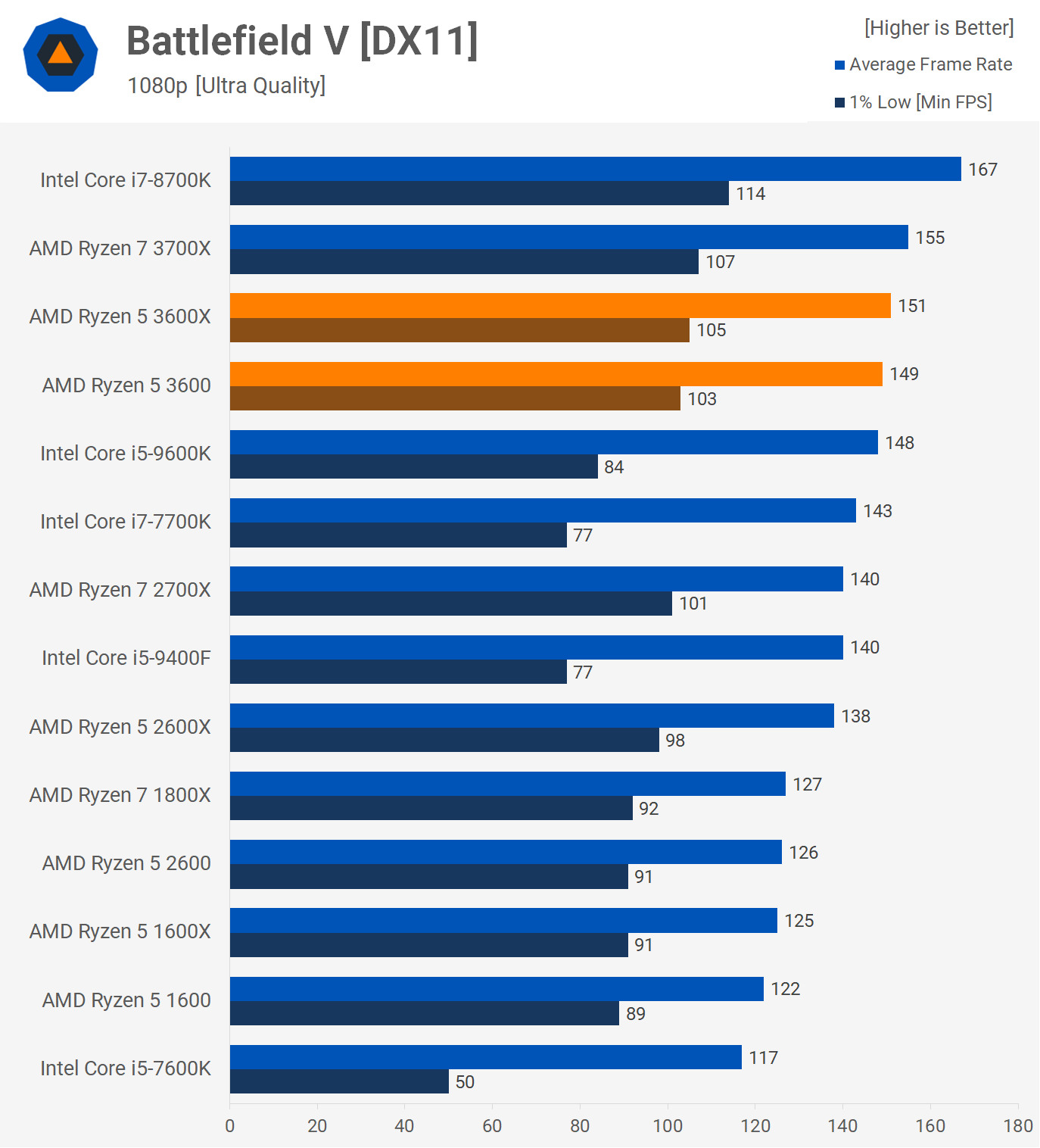
We only see a 1 fps difference in The Division 2 and we should also note that the 3600X and 3600 match the 3700X in this title and we saw a similar thing when testing with Battlefield V and Assassin's Creed Odyssey.
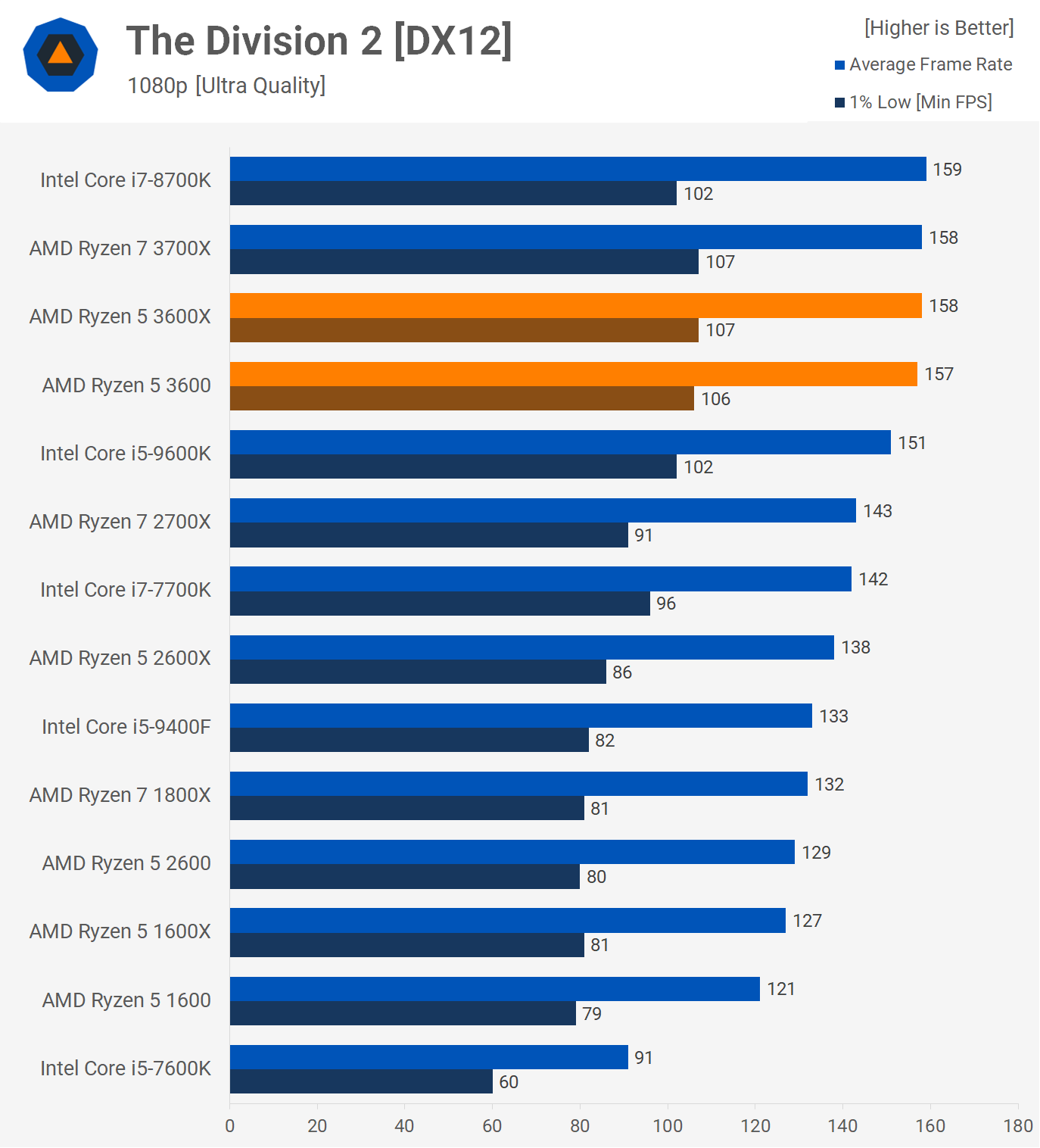
The 3700X does offer a small performance boost over the 3600X in Shadow of the Tomb Raider but the 3600X was only up to 3% faster than the 3600. So it's pretty clear by this point that in terms of performance the 3600 and 3600X are basically the same.

Power Consumption
Even when it comes to power draw there's virtually no difference. The 3600X increased total system consumption by just 4% when measuring power draw from the wall. That's interesting given the thermal watt rating increased by 46% for the 3600X, surely it's not chucking out that much more heat.

Operating Temperatures
Speaking of heat, let's look at how the 3600X compares with its 95w Wraith Spire box cooler to the 3600 with the 65w Wraith Stealth, when running Blender. Stock the 3600 hit 80 degrees whereas the 3600X ran 2 degrees cooler at 78 degrees, but it did so while clocking 100 MHz higher, a 2.5% increase in frequency.
Then with PBO+AutoOC enabled, the 3600 hit 84 degrees but only ran 25 MHz faster, while the 3600X also hit 84 degrees but ran 50 MHz faster for a 3% increase over the 3600.
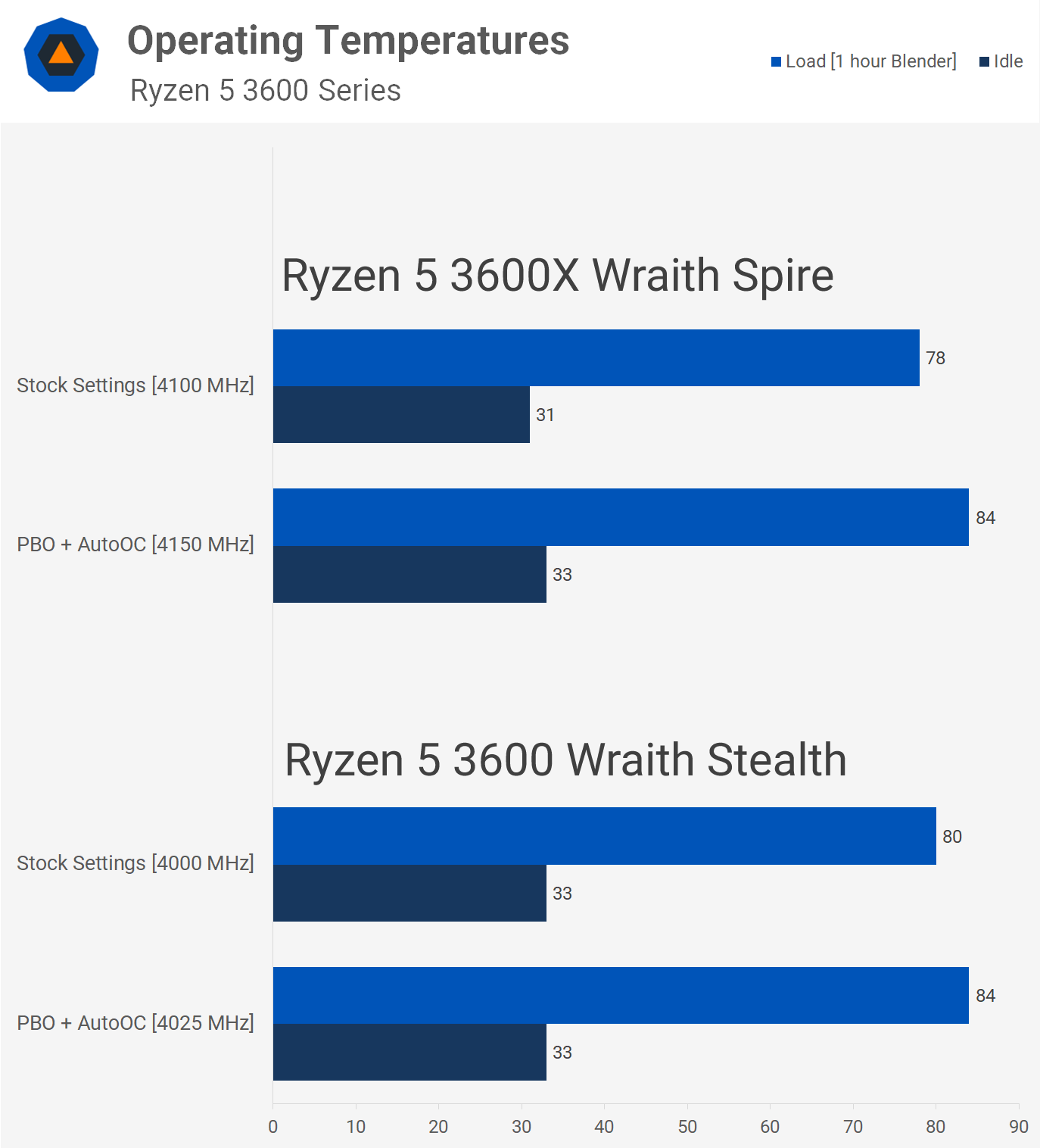
Out of interest we tested both CPUs with the Wraith Spire and Stealth to see how temperatures compared. In short, using either cooler the 3600X ran 6 degrees hotter and you can expect some throttling with the Stealth cooler, so lets re-run this test again with the Corsair H115i Pro installed.

With a quality all-in-one liquid cooler installed we find something very interesting: almost no difference between the two CPUs. Temperatures were exactly the same and clock speeds were also basically identical, in fact the R5 3600 maintained a slightly better PBO frequency in our test, though we wouldn't read into that too much, there's a good chance if we ran this enough times with enough CPUs we'd find that on average there'd be no difference in operating frequency.
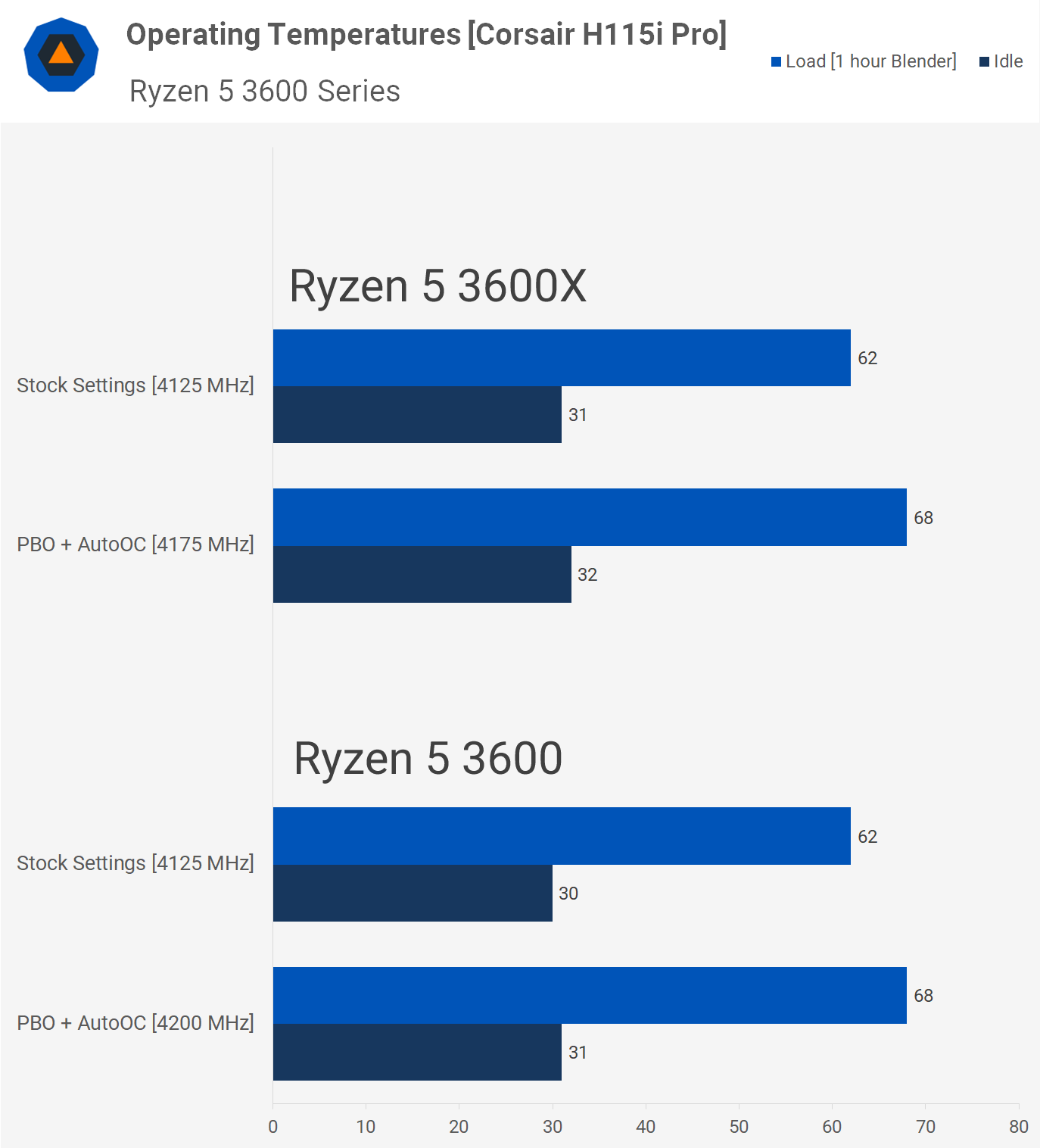
Before wrapping this up let's have another look at power usage, this time focusing on CPU package power and core current.
Using the included box cooler we see virtually no difference in power draw between the 3600X and 3600 and the same is also true when using an aftermarket cooler.
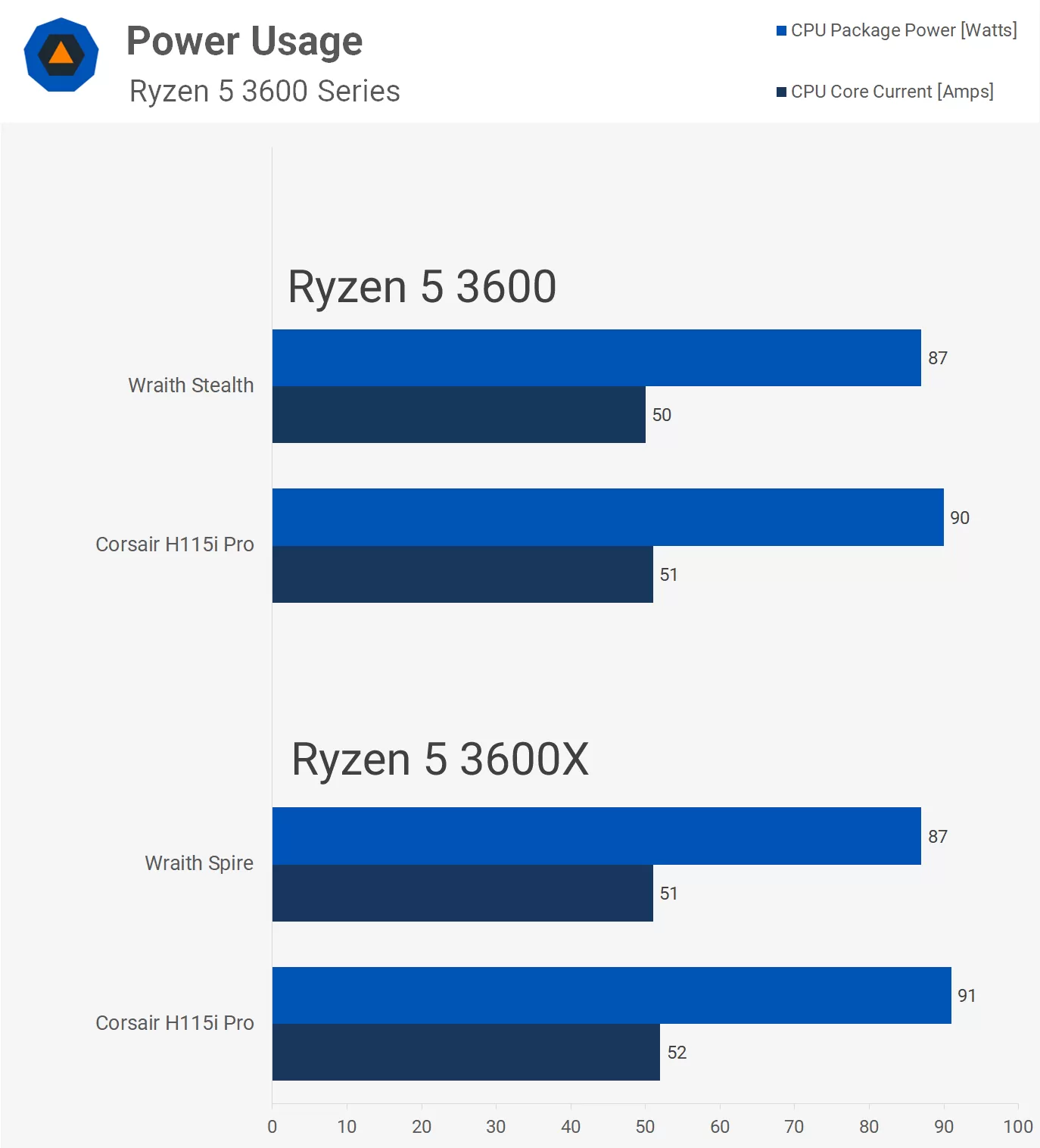
Wrap Up
Is the Ryzen 5 3600X worth purchasing over the 3600? Not at all. Other than to improve AMD's margins there's no reason for the 3600X to exist. Yes, you get a better cooler out of the box, but usually the asking price premium is not worth it. $10 sure, but not more than that.
The vanilla R5 3600 has proved the more popular CPU since launch (thanks to our recommendation and many others'), and that's the reason the 3600X's price is lower than at launch. If you want to reduce the operating volume and squeeze a tiny bit more performance out of this great-value Ryzen 5 processor, we recommend you grab something like the Cooler Master 212 for about $30.
We suspect the reason so many of you asked for this comparison is once again the misleading TDP ratings. The only thing that makes the R5 3600 a 65 watt TDP part, is the 65 watt cooler, while the 3600X is a 95 watt TDP part because it comes with a 95 watt cooler. You can basically swap the coolers around and reverse the results. The 3600 becomes a 3600X with the Wraith Spire and the 3600X becomes a 3600 with the Wraith Stealth.
AMD explains how they calculate the TDP for Zen 2 processors in the review guide, but it doesn't help address the issue as there are variables we don't know, such as the optimal operating temperatures for each part. While we could ask AMD for those figures, in the end it doesn't really matter as both CPUs are essentially the same, the only difference being the base and boost clock speeds which on paper differ by up to 6%.
We haven't discussed manual overclocking. Some might argue the 3600X is a binned part and therefore will overclock better than the 3600. Our two samples were bought on retail and from this tiny sample that wasn't the case, both were limited to 4.2 GHz at 1.35v and both could boot into Windows at 4.3 GHz, but even with 1.4v failed even a basic stress test.
Whatever we learned in years past with the 1600 and 2600 series does not apply here. The end result is a good one, you can save money. We recommend avoiding the 3600X and instead buy the more affordable $175 Ryzen 5 3600. If you find it necessary, upgrade the box cooler to something better.
